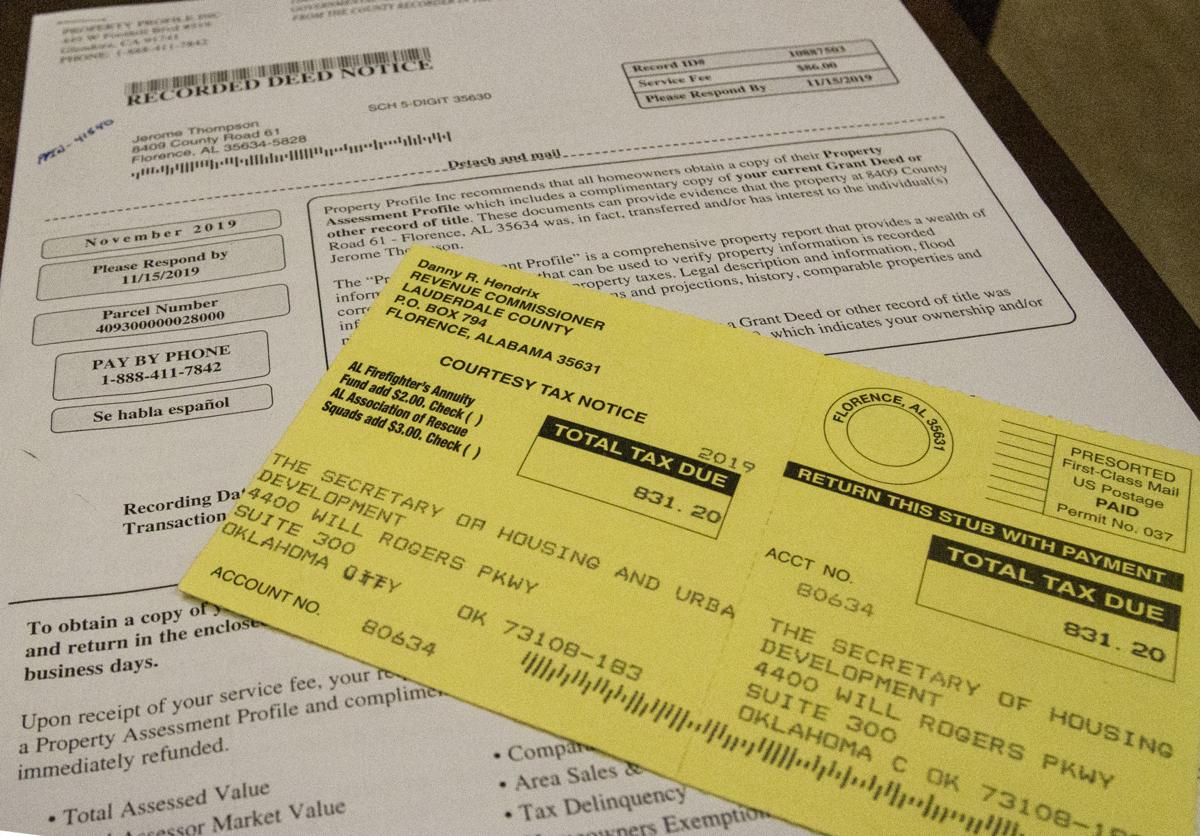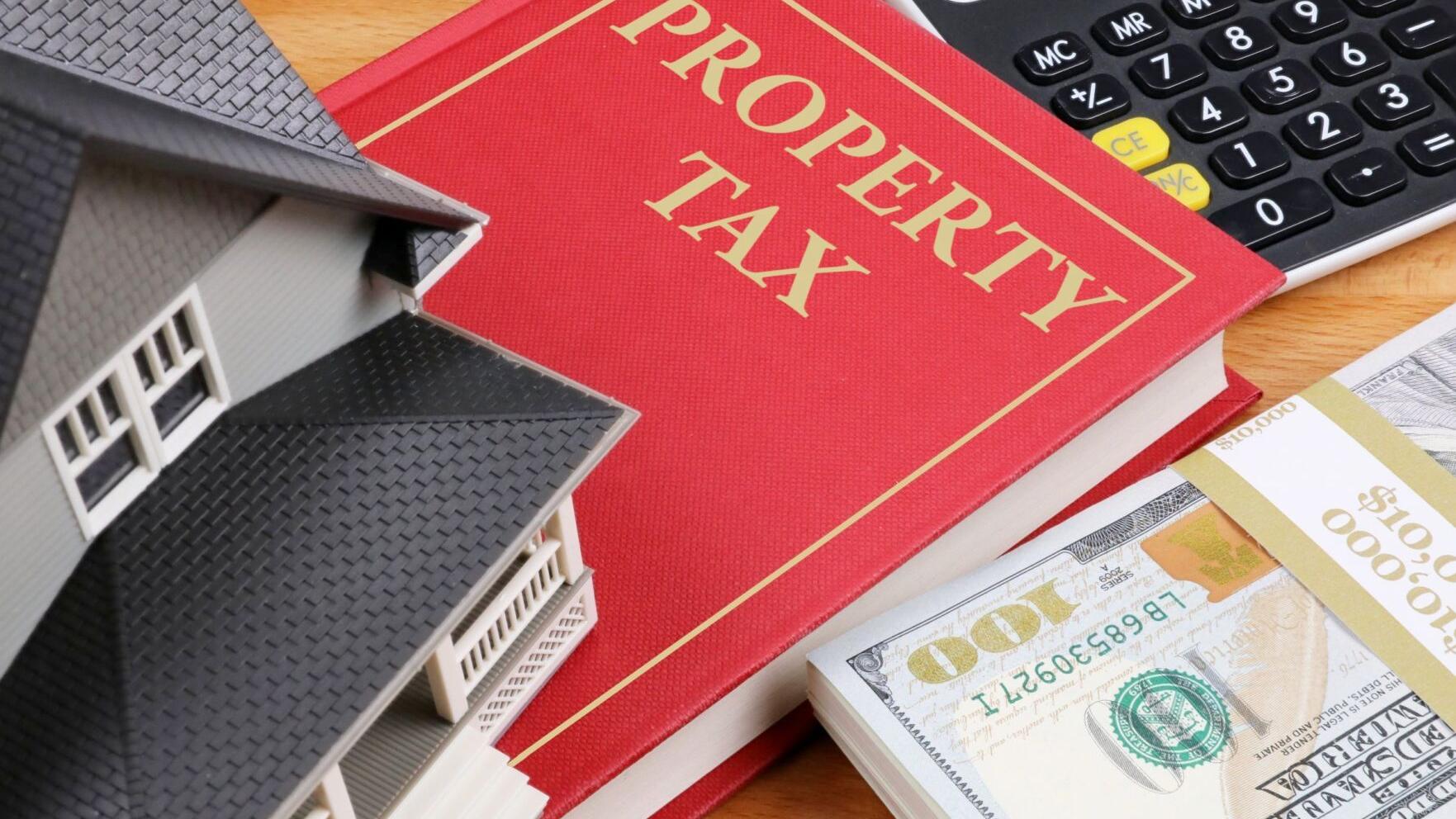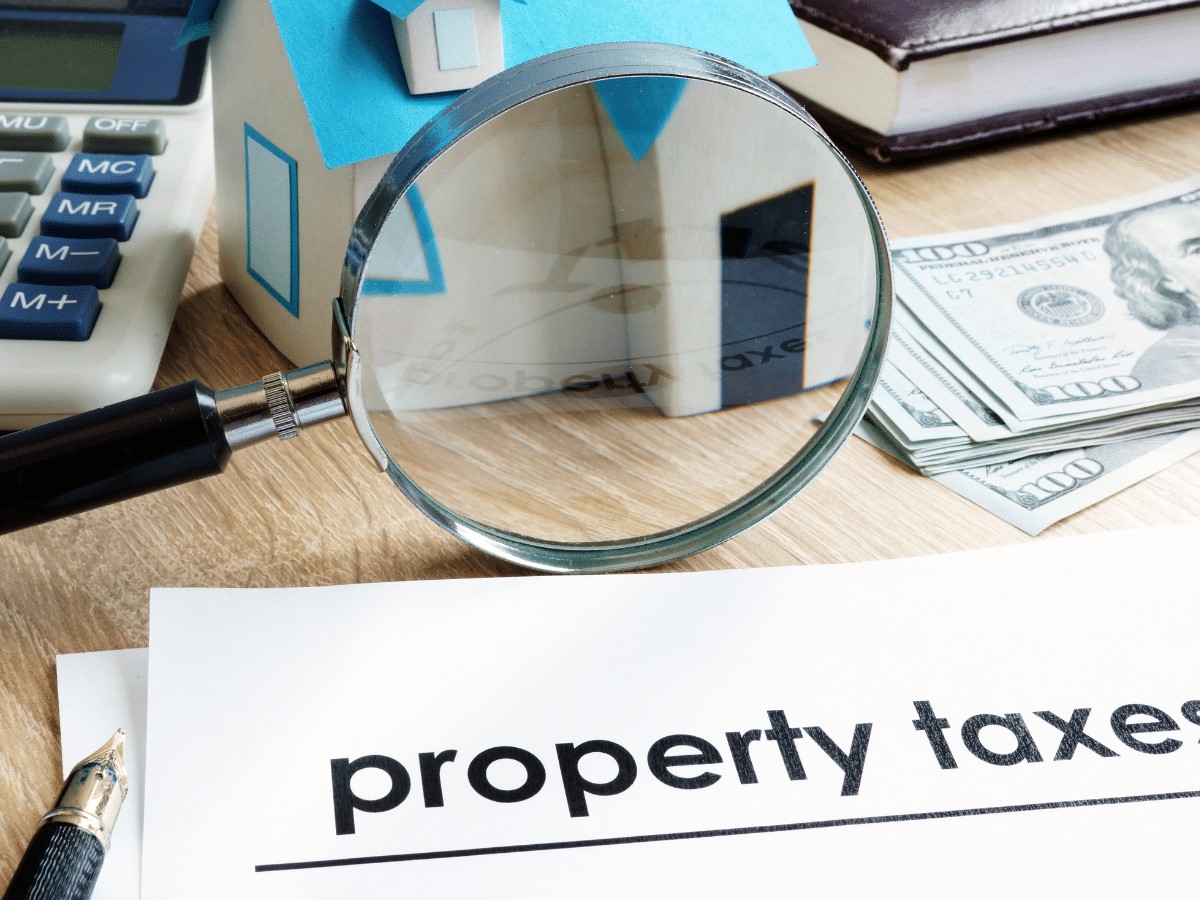Home>Home Maintenance>Why Did The Real Property Assessment Drop?


Home Maintenance
Why Did The Real Property Assessment Drop?
Modified: March 6, 2024
Learn why the real property assessment dropped and how home maintenance affects it. Find tips on maintaining your home to ensure accurate assessments.
(Many of the links in this article redirect to a specific reviewed product. Your purchase of these products through affiliate links helps to generate commission for Storables.com, at no extra cost. Learn more)
Introduction
When it comes to homeownership, one of the key components is the real property assessment. This assessment determines the value of a property for taxation purposes, and a significant drop in its value can have a profound impact on homeowners and the local economy. But what factors contribute to this drop in real property assessments? In this article, we will explore the various factors that can lead to a decrease in property assessments and delve into the potential implications.
It is important to understand that real property assessments are not fixed values; they can fluctuate over time due to a multitude of factors. These factors can range from economic conditions to changes in property development regulations and government policies. By identifying these factors, homeowners can gain a better understanding of how the value of their property is assessed and why it may experience a decline.
Whether you are a homeowner looking to understand the reasons behind a drop in your property assessment or simply interested in the intricacies of real estate valuation, this article will provide valuable insights into the various factors that can contribute to a decrease in property assessments.
Key Takeaways:
- Fluctuations in property assessments can be influenced by economic factors, market conditions, and property renovations, impacting homeowners’ tax obligations and financial planning.
- Understanding the factors behind property assessment fluctuations empowers homeowners to make informed decisions, navigate the real estate market effectively, and advocate for fair taxation.
Factors Contributing to the Drop in Real Property Assessments
There are several factors that can contribute to a decrease in real property assessments. These factors can range from broader economic conditions to specific changes in property development regulations. Let’s explore some of the key factors that can lead to a drop in property assessments:
- Economic Factors: The overall state of the economy can have a significant impact on property assessments. Economic downturns, recessions, or even shifts in local job markets can result in decreased demand for properties. When demand decreases, property values tend to follow suit, leading to lower assessments.
- Market Conditions: The real estate market plays a crucial role in property assessments. Fluctuations in market conditions, such as supply and demand imbalances or changes in interest rates, can influence property values. If there is an oversupply of properties in a certain area, it can lead to a drop in assessments as buyers have more options to choose from.
- Property Development Regulations: Changes in property development regulations can impact assessments, especially in areas experiencing significant growth or redevelopment. If there are stricter regulations or zoning changes that limit the potential use or development of properties, it can affect their assessed values.
- Government Policies: Government policies, such as tax reforms or changes in property tax rates, can have a direct impact on property assessments. If tax rates increase or incentives for homeownership are reduced, it can lead to a decrease in assessments as the overall cost of owning a property increases.
- Property Sales and Transactions: The number and nature of property sales and transactions in a particular area can influence assessments. If there is a decline in sales activity or a higher proportion of distressed sales (e.g., foreclosures), it can result in lower property assessments as comparable values may be affected.
- Property Renovations or Improvements: Renovations or improvements made to a property can impact its assessment value. If significant improvements are made that increase the overall value of the property, the assessment may rise. However, if the renovations are not substantial or do not significantly improve the property, it may result in a lower assessment.
- Property Appraisals and Assessments: Property appraisals and assessments are crucial in determining the value of a property. If there are errors or inaccuracies in the appraisal process, it can result in a lower assessment value. Likewise, changes in assessment methodologies or market valuation models can lead to fluctuations in property assessments.
It is important to note that the impact of these factors can vary depending on the specific location and individual property characteristics. Property assessments are a complex process that takes into account a multitude of factors, and a drop in assessment value does not necessarily indicate a decline in the property’s overall worth.
By understanding the various factors that can contribute to a decrease in real property assessments, homeowners and prospective buyers can better navigate the real estate market and make informed decisions regarding their properties.
Impact of Economic Factors on Property Assessment Values
Economic factors play a significant role in determining property assessment values. The overall state of the economy can have both direct and indirect impacts on real estate markets, which in turn can affect property assessments. Let’s delve into how economic factors can influence property assessment values:
1. Economic Downturns: During periods of economic recession or downturn, property assessment values tend to decrease. High unemployment rates, reduced consumer spending, and a decline in business activities can lead to a decrease in demand for properties. As a result, property values can dip, leading to lower assessments.
2. Job Market Fluctuations: Changes in the local job market can impact property assessment values. For example, if an area experiences a decline in employment opportunities or the loss of a major employer, it can lead to decreased demand for properties. This decreased demand can result in lower property values and subsequently lower assessments.
3. Interest Rates: The fluctuation of interest rates can affect the affordability of borrowing for homebuyers. When interest rates rise, it can make mortgages more expensive, reducing the purchasing power of potential buyers. As a result, demand for properties may decrease, causing property values and assessments to decline.
4. Consumer Confidence: The level of consumer confidence in the economy can influence property assessments. During times of economic uncertainty, consumers may be hesitant to invest in real estate, leading to a decrease in demand and subsequently lower property values. This decline in value can be reflected in property assessments.
5. Supply and Demand Imbalances: Economic factors can influence supply and demand imbalances in the real estate market. If there is an oversupply of properties relative to the demand, it can lead to a decline in property values and assessments. Conversely, a shortage of properties can result in increased demand and higher assessments.
6. Access to Financing: The availability of financing options plays a crucial role in the real estate market. If there are strict lending policies or limited access to mortgage loans, it can hinder buyers’ ability to purchase properties. This reduced demand can contribute to decreased property values and assessments.
It is important to note that economic factors do not solely dictate property assessment values. Other factors, such as the location, condition, and amenities of a property, also play a significant role. Additionally, property assessments are based on historical data and may not always reflect immediate economic changes. However, over time, economic factors can influence property values and subsequently impact assessments.
Homeowners and buyers should remain aware of economic conditions and trends to understand the potential impact on property assessment values. By staying informed and working with real estate professionals, individuals can make more informed decisions regarding their properties in relation to economic factors.
Role of Market Conditions in Property Assessment Fluctuations
Market conditions have a significant influence on property assessments and can contribute to fluctuations in assessment values. The real estate market is constantly changing, and various factors can impact supply and demand dynamics, ultimately affecting property values and assessments. Let’s explore the role of market conditions in property assessment fluctuations:
1. Supply and Demand: Market conditions, particularly the balance between supply and demand, directly impact property assessment values. When there is a high demand for properties but limited supply, it can drive up property values, resulting in higher assessments. Conversely, if there is an oversupply of properties and a low level of demand, it can lead to decreased property values and lower assessments.
2. Location: A property’s location plays a crucial role in determining its value. Market conditions can vary significantly by location, which can lead to differing assessment fluctuations. In sought-after areas where demand is high, property values and assessments may increase. On the other hand, in areas with declining demand or lack of amenities, property values and assessments may decrease.
3. Comparable Sales: Market conditions can be evaluated based on comparable sales of similar properties in the area. Appraisers and assessors analyze recent sales data to determine the value of a property. If comparable sales indicate a trend of increasing prices, it can lead to higher assessments. Conversely, if comparable sales show a decline or stagnation in prices, it can result in lower assessments.
4. Housing Market Trends: The overall trends in the housing market, such as fluctuations in interest rates, mortgage availability, and affordability, can impact property assessments. For instance, when interest rates are low and mortgage financing is readily available, it can stimulate demand for properties, potentially leading to higher assessment values. Conversely, if interest rates increase or mortgage availability tightens, it may result in decreased demand and lower assessments.
5. Investor Activity: Market conditions are influenced by investor activity in the real estate market. When investors are actively buying properties for investment purposes, it can increase demand and raise property values, potentially leading to higher assessments. Conversely, if there is a decrease in investor activity, it can lead to a decline in property values and lower assessments.
6. Local Economic Factors: Market conditions are also influenced by local economic factors, such as job growth, income levels, and population changes. A thriving local economy can attract buyers and increase demand for properties, resulting in higher assessments. On the other hand, a stagnant or declining local economy can lead to decreased demand and lower assessment values.
It’s important to understand that market conditions can vary regionally and even within different neighborhoods of the same locality. Property assessments reflect the market conditions at a particular point in time, and as market conditions change, assessments may fluctuate accordingly. It’s recommended that homeowners stay informed about local market trends and work with real estate professionals to gain a better understanding of how market conditions can influence property assessments.
Effects of Changes in Property Development Regulations
Changes in property development regulations can have a significant impact on property assessments. These regulations are enacted by local governments to guide and control the development and use of land within a specific jurisdiction. When these regulations change, it can directly affect property assessments. Let’s explore some of the effects that changes in property development regulations can have on property assessments:
1. Zoning Changes: Zoning regulations determine how land can be used in a specific area. Changes in zoning can impact property assessments by altering the potential uses and development opportunities for a property. If a property’s zoning is changed to a less desirable use, such as from residential to commercial, it can decrease the assessed value. Conversely, a change that allows for higher-density or more lucrative uses can increase the assessed value.
2. Height and Density Restrictions: Some areas have height and density restrictions in place to manage growth and maintain the character of a neighborhood. Changes to these restrictions can affect property assessments. If height and density limits are increased, allowing for more development on a property, it can potentially increase its assessed value. Conversely, if restrictions are tightened, limiting the development potential, it may result in a decrease in assessed value.
3. Environmental Regulations: Environmental regulations aim to protect natural resources and mitigate potential negative impacts of development. These regulations can include restrictions on building in environmentally sensitive areas, setbacks from water bodies, or requirements for environmental assessments. If stricter environmental regulations are implemented, it can limit development options and potentially decrease property assessments.
4. Historic Preservation Designations: In some areas, properties can receive historic preservation designations to protect their historical or architectural significance. These designations can have implications on property assessments. While it may restrict certain alterations or changes to a property, it can also increase its appeal and value due to its unique characteristics. Overall, the effect on assessments will be case-specific and depend on the specific restrictions and allowances within the designation.
5. Development Incentives: Changes in property development regulations can also include the introduction of development incentives. These incentives aim to encourage specific types of development, such as affordable housing or green building initiatives. The availability of such incentives can increase property assessments as it enhances the value and desirability of properties that meet the criteria for these incentives.
6. Infrastructure Development: Changes in property development regulations may be accompanied by infrastructure development plans, such as the construction of roads, utilities, or community amenities. These developments can positively impact property assessments by increasing accessibility, improving quality of life, and enhancing property values in the surrounding areas.
It’s important to note that the effects of changes in property development regulations on property assessments can vary depending on the specific location and context. Property assessments consider a wide range of variables beyond just the regulations themselves, including market demand, comparable sales, and property characteristics. Homeowners should stay informed about any changes in regulations that may impact their property and consult with professionals, such as real estate agents or appraisers, to understand how these changes may affect their property assessments.
Check for any recent changes in the property, such as renovations or damages, that could affect the assessment. Also, review the local market trends and compare your property to similar ones in the area to understand the drop in assessment.
Influence of Government Policies on Real Property Assessments
Government policies play a crucial role in shaping real property assessments. These policies are enacted at various levels of government and can directly impact the value and assessment of properties. Let’s explore how government policies can influence real property assessments:
1. Property Tax Policies: Government policies regarding property taxes can have a direct impact on property assessments. Property tax rates and assessment methodologies are often determined by local governments. If tax rates increase, it can lead to higher assessments as the value of properties is evaluated in relation to tax liabilities. Conversely, if tax rates decrease, it can result in lower assessments as the tax burden on properties is reduced.
2. Tax Exemptions and Incentives: Governments may offer tax exemptions or incentives to certain types of properties or property owners. For example, properties used for nonprofit purposes or properties in designated redevelopment zones may qualify for tax breaks. These exemptions and incentives can affect property assessments by reducing the taxable value, thereby impacting assessment values.
3. Affordable Housing Policies: Government policies aimed at promoting affordable housing can impact property assessments. In some cases, affordable housing initiatives may include restrictions on the resale value or resale restrictions for properties. These factors can affect the perceived market value of properties and subsequently influence assessment values.
4. Land Use and Development Regulations: Government policies regarding land use and development can indirectly impact property assessments. Zoning regulations, building codes, and other land use policies can affect property values by determining how properties can be utilized and developed. Changes in these regulations can impact the potential uses and development opportunities for properties, subsequently influencing assessment values.
5. Government Infrastructure Investments: Government investments in infrastructure can have a positive influence on property assessments. Developments such as transportation improvements, the construction of schools, parks, or community facilities can enhance the desirability and value of properties in the area, leading to increased assessments.
6. Economic Stimulus Programs: Government policies aimed at stimulating the economy can indirectly impact property assessments. Programs such as tax credits for homebuyers or incentives for property renovations can increase demand for properties and potentially drive up property values, resulting in higher assessments.
It’s important to note that government policies can vary based on jurisdiction and can change over time. Property assessments are based on multiple factors, including market conditions, property characteristics, and comparable sales data. While government policies can influence assessments, they are just one component of the overall assessment process.
Homeowners and buyers should stay informed about government policies that may affect property assessments in their area. Working with real estate professionals and seeking guidance from local government officials can provide valuable insights into the potential impact of government policies on real property assessments.
Significance of Fluctuations in Property Sales and Transactions
Fluctuations in property sales and transactions can have significant implications for property assessments. The number and nature of sales in a given area can reflect the current real estate market conditions and directly impact property assessment values. Understanding the significance of these fluctuations is crucial for homeowners and buyers. Let’s explore the key points regarding the importance of fluctuations in property sales and transactions:
1. Market Demand and Supply: Property sales and transactions provide valuable insights into market demand and supply. An increase in sales activity typically indicates a higher demand for properties, signaling a seller’s market. In this case, property values and assessments may trend upward. Conversely, a decrease in sales suggests lower demand, indicating a buyer’s market, which may result in lower property values and assessments.
2. Comparative Market Analysis: Property sales data is essential in conducting comparative market analysis (CMA) for property assessments. Assessors use recent sales of comparable properties to evaluate the value of a property. Fluctuations in sales prices can impact the assessed values of similar properties, which may trigger changes in the assessments of other properties within the same area.
3. Appraisal Accuracy: Property sales data plays a vital role in property appraisals. Appraisers rely on recent transactions to determine the fair market value of a property. Fluctuations in sales prices provide appraisers with current market data, enabling them to make accurate assessments. Without recent sales data, appraisals may rely on outdated information, potentially leading to inaccurate property assessments.
4. Assessment Equity: Fluctuations in property sales are crucial for maintaining equity in property assessments. Assessments that reflect accurate market values ensure that homeowners are assessed fairly and pay their fair share of property taxes. Fluctuations in sales prices help recalibrate assessments to reflect market realities, preventing households from facing inequitable tax burdens.
5. Property Investment Decisions: Fluctuations in property sales can influence investment decisions. Buyers and sellers consider recent sales data to evaluate market trends and determine the value of properties. Higher sales prices indicate an appreciation in property values, making it more attractive for investors to buy. Conversely, lower sales prices may motivate sellers to adjust their asking prices or discourage potential buyers. These fluctuating sales prices impact the overall confidence and decision-making in the real estate market.
6. Indicators of Economic Health: Property sales and transactions are often seen as indicators of the overall health of the local economy. Robust sales activity reflects a thriving economy, while sluggish sales may suggest economic challenges. These fluctuations can have broader implications on job growth, consumer confidence, and overall market stability, which can subsequently impact property assessments.
It is crucial to note that property sales data alone cannot be the sole determinant of property assessment values. Other factors, such as property condition, location, and specific property characteristics, are also taken into account. However, fluctuations in property sales and transactions provide valuable real-time information about market dynamics, allowing for more accurate and informed property assessments.
Homeowners and buyers should monitor sales activity in their area and work with real estate professionals to understand the significance of these fluctuations on property assessments and real estate decisions.
Effects of Property Renovations or Improvements on Assessments
Property renovations or improvements can have a significant impact on property assessments. When homeowners invest in upgrading or enhancing their properties, it can result in changes to the assessed value. Understanding the effects of renovations or improvements on assessments is crucial for homeowners who want to accurately assess the value of their property. Let’s explore the key points regarding the effects of property renovations or improvements on assessments:
1. Increased Property Value: Renovations or improvements that enhance the overall condition and quality of a property can increase its assessed value. For example, upgrading the kitchen or bathrooms, adding square footage, or improving the energy efficiency of a property can lead to an increase in assessment value. Assessors consider the quality and condition of a property when determining its assessed value, and renovations that enhance these factors can result in a higher assessment.
2. Assessment Reappraisal: Significant renovations or improvements may trigger a reassessment of the property. Some jurisdictions require reassessment when substantial changes are made to the property. This reassessment can lead to an increase in property assessments to reflect the higher value brought about by the renovations or improvements.
3. Local Market Impact: The impact of renovations or improvements on property assessments can vary depending on the local market conditions. In a seller’s market where demand exceeds supply, home improvements can result in a higher assessment as buyers are willing to pay a premium for upgraded properties. However, in a buyer’s market with minimal demand, renovations may not have as significant an impact on assessments as the overall market value remains stagnant.
4. Comparable Sales and Market Perception: The effect of renovations or improvements on assessments may also be influenced by comparable sales and market perception. If recent sales of similar properties in the area have high prices due to renovations or improvements, it can influence the assessed value of the property in question. Appraisers take into account the sales prices of comparable properties when valuing a property, and renovations that align with market expectations can positively impact assessments.
5. Assessors’ Discretion: Assessors have the discretion to consider the impact of renovations or improvements on the assessed value of a property. They take into account the scope, quality, and cost of improvements, as well as the overall market perception. Assessors may consider factors such as the age of renovations, the materials used, and the perceived appeal of the improvements to determine the appropriate assessment value.
6. Cost vs. Value Consideration: Homeowners should be mindful that not all renovations or improvements will yield a dollar-for-dollar increase in assessment value. Assessors may consider the cost of the renovations relative to the value they add to the property. Some renovations, such as a swimming pool or high-end features that appeal to a niche market, may not result in a proportional increase in assessment value.
It is important for homeowners to consult with local assessors or appraisers to understand the potential impact of specific renovations or improvements on the assessed value of their property. These professionals can provide guidance on the local assessment practices and market conditions to help homeowners make informed decisions about renovations and accurately assess their property’s value.
Role of Property Appraisals and Assessments in Determining Taxes
Property appraisals and assessments play a fundamental role in determining taxes for property owners. These assessments serve as the foundation for calculating property taxes, which are a primary source of revenue for local governments. Understanding the role of appraisals and assessments in determining taxes is crucial for property owners to ensure fair and accurate taxation. Let’s explore the key points regarding the role of property appraisals and assessments in determining taxes:
1. Establishing Property Value: Property appraisals and assessments are conducted to determine the fair market value of a property. Appraisers or assessors evaluate various factors such as property location, size, condition, amenities, and comparable sales data to estimate its value. The assessed value serves as the basis for calculating property taxes.
2. Tax Rates and Budgetary Needs: Local governments set tax rates based on their budgetary needs to provide essential services and infrastructure to residents. Property taxes are typically calculated by multiplying the assessed value of the property by the applicable tax rate. The revenue generated from property taxes helps fund schools, public safety, road maintenance, and other municipal services.
3. Equalization: Property appraisals and assessments are important for ensuring equitable taxation. Assessors aim to assess properties at their fair market value to distribute the tax burden fairly among property owners. Through accurate and consistent assessments, property appraisals help maintain equity in tax assessments, ensuring that similar properties are taxed at similar rates.
4. Assessment Revaluations: Property assessments are periodically updated to reflect changes in property values. Revaluations may occur annually, biennially, or at longer intervals depending on local regulations. These reassessments help capture fluctuations in property values and adjust tax liabilities accordingly. When property values rise or fall, reassessments ensure that property owners are contributing their fair share of taxes based on the current value of their property.
5. Tax Exemptions and Relief: Property appraisals and assessments also help determine eligibility for tax exemptions and relief programs. Certain properties or property owners may qualify for exemptions or reductions in their tax obligations. For example, senior citizens, veterans, or properties used for nonprofit purposes may be eligible for tax relief based on specific criteria. Accurate property appraisals are essential in determining eligibility for such programs.
6. Appeals and Dispute Resolution: Property owners have the right to appeal their property assessments if they believe they are inaccurate or unfair. Appraisal and assessment processes include mechanisms for property owners to challenge their assessments through appeals boards or administrative proceedings. These processes ensure that property owners have recourse if they believe their assessments are incorrect or inequitable.
Property appraisals and assessments are critical components of the taxation system, as they provide a fair and transparent mechanism for determining property taxes. Property owners should review their assessments periodically, understand their rights to appeal, and ensure that the assessed value accurately reflects the current market value of their property.
It is advisable for property owners to consult with local assessors or tax professionals to understand the specific assessment processes and taxation regulations in their jurisdiction. This can help them navigate the complexities of property taxes and ensure compliance with the applicable laws and regulations.
Conclusion
Understanding the factors that contribute to the fluctuations in real property assessments is essential for homeowners, buyers, and anyone interested in the real estate market. Various factors, including economic conditions, market dynamics, government policies, property renovations, and assessments, play a significant role in determining property assessment values. Recognizing the significance of these factors can help individuals make informed decisions regarding their properties and navigate the complexities of the real estate market.
Fluctuations in property assessments can have profound implications for homeowners. A drop in property assessments can lead to lower property taxes, potentially providing financial relief. On the other hand, an increase in assessments may result in higher tax obligations for homeowners. Understanding the factors behind these fluctuations allows homeowners to better anticipate and plan for the potential impact on their finances.
Property assessments serve as a tool for local governments to determine property tax revenues, allocate resources, and provide essential services to communities. An accurate and equitable assessment system ensures that the tax burden is distributed fairly among property owners.
Property appraisals and assessments are not static values but are subject to changes over time. Economic conditions, market fluctuations, and property improvements can all impact the assessed value of a property. Homeowners should stay informed about these factors and work with real estate professionals to ensure that their property assessments are accurate and reflect the current market conditions.
Overall, a comprehensive understanding of the factors influencing real property assessments empowers homeowners to make informed decisions, navigate the real estate market effectively, and ensure fair taxation. By staying informed, seeking professional advice, and advocating for accurate assessments, homeowners can have greater confidence in the assessment process and contribute to a fair and transparent real estate market.
Frequently Asked Questions about Why Did The Real Property Assessment Drop?
Was this page helpful?
At Storables.com, we guarantee accurate and reliable information. Our content, validated by Expert Board Contributors, is crafted following stringent Editorial Policies. We're committed to providing you with well-researched, expert-backed insights for all your informational needs.














0 thoughts on “Why Did The Real Property Assessment Drop?”